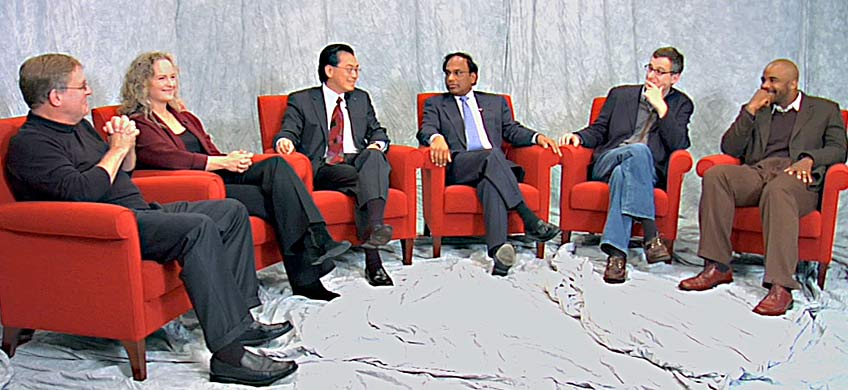
(page 2 of 7)
Michael Anft: When we think back 40 years or so, we might remember that Americans had a more sanguine view of what was coming. Nowadays, the future doesn’t beckon so much as it looms as a series of entangled threats. Are these fears likely to be realized? Or does this spate of dystopic visions indicate a lack of imagination about what we’re going to see in the future?
Yash Gupta: I think the gloom and doom phenomenon is temporary. People extrapolate from the current conditions to what their future would look like. If you look at today, you see high unemployment and foreclosure rates. But all this will pass. When Neil Armstrong landed on the moon, there was optimism because that was something new the world had created. That will be the feeling the next time innovation comes.
Michael Anft: The economy is casting a pall. So is the environment.
Yash Gupta: What do you see when you turn on the television? That global warming will leave 200 million people without homes, and that when 2030 rolls around we’ll have 85 percent of the population and 40 percent of the GDP in areas where we consume more water than we have. The reporting of these things really has an impact on the psyches of people.
Nathan Connolly: I think it’s important to pay attention to some of those projections. Many of these [apocalyptic movies and books] are trying to inspire a certain psychic change—to almost scare people into action. We should pay attention to them as a cultural phenomenon. There are certain projections that are, for lack of a better word, depressing about where the economies are going and the consolidation of wealth and the greatly increasing gap between the poor and the rich. I don’t think it’s necessarily going to be like that, but you should not ignore the signs simply because the future’s not going to be a holocaust on a Mad Max scale. Certain things—economic flows, migration flows, the future of housing—are very much questions that we should be answering now in hopes of avoiding a certain kind of, if not apocalyptic, at least unfortunate, future.
Chi Dang: I’m going to echo that I think that these are signs that we need to readjust, to recalibrate, with the thought in mind that right now our society has a lot in hand. This country’s very wealthy. There are people worried about losing what they have, so they have a sense of gloom and doom about what’s ahead. We also have lost this whole issue of spirituality in terms of getting back to fundamentally what existing and having a meaningful life means.
Margaret Moon: When I think of gloom and doom, I interpret that as anger and suspicion. I think it emerges from a sense that the people we have trusted to protect our future aren’t doing it for us. Or there’s some question about whether things are moving too quickly for people to have an impact on them. Recalibration ought to focus on why people feel so angry and suspicious and left out.
Nathan Connolly: It’s a great example of the importance of emotion. One of the things that was so remarkable about the presidential campaign of 2008 was it was the first time in a long while where folks tried to build a mass movement around hope as opposed to fear. Now, regardless of what you thought of the politics involved, that was a new kind of sensation that many people had. It reminded folks of the Depression years because when things were actually at their economic worst in the 20th century, you had an administration coming out of the White House that tried to tap into this politics of hope. They’re telling people to be free from fear, from want. I think there is acknowledgment that we have to have some kind of emotional movement in the right direction.
Chi Dang: There is hope and a recognition that we have to go from this culture of me back to the culture of the community, and I think that’s what we need to teach the next generation. I tell my children, you know what? The only thing I expect of you is that you make society better in some way. Don’t just look out for yourself. I think that’s the fear—self-preservation. We’re wired to preserve ourselves, right? But we need to preserve more than us. That’s where this hope comes from. I think that’s why young people came out in 2008. They see that it’s not just about me; it’s about everybody else, too.
Margaret Moon: As educators, this question of fear is a part of our lives and it’s an incredibly powerful force. How do we educate students in our democratic society to make better use of fear so that it doesn’t turn into anger? The doom and gloom we were talking about is all about giving into anger, much of it generated from suspicion. So, what is it about our education? How can we make it better so that fear becomes less damaging, while protecting the parts of fear that are creative?
